Join me for a relaxed and inspiring travel sketching workshop in the heart of one of Italy’s most beautiful villages. Using ink and watercolour, we’ll capture the timeless charm of Monte Castello’s medieval streets, sun-drenched piazzas, and sweeping Umbrian landscapes. My workshops focus on simplifying complex scenes, finding your personal sketching voice, and embracing the imperfections of on-location sketching.
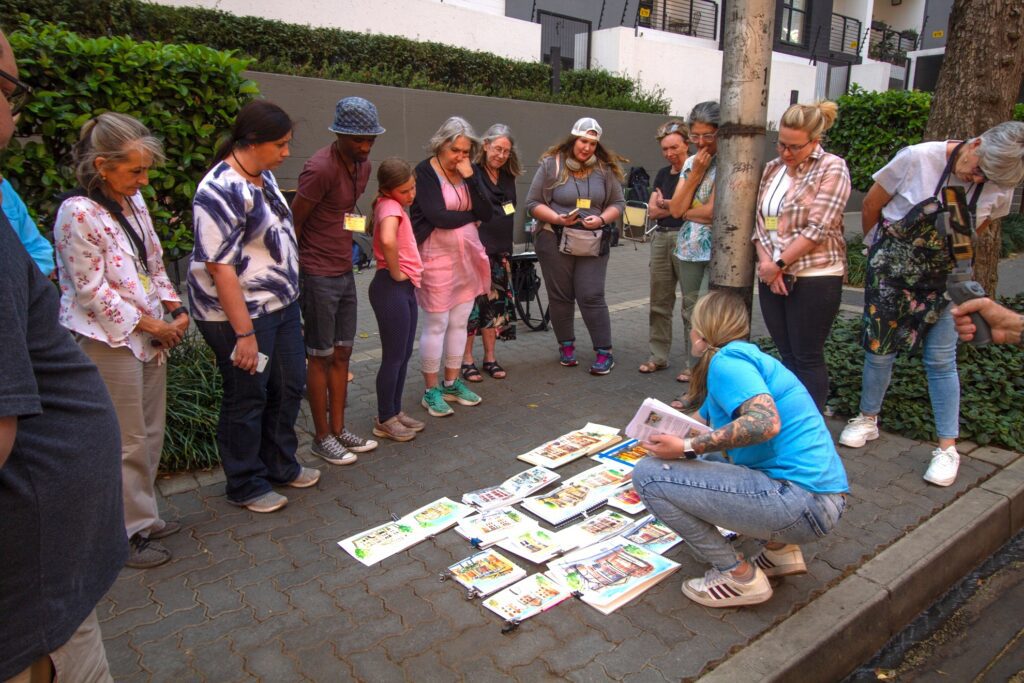 Participants will work with portable materials — pens, travel watercolour sets, and sketchbooks — ideal for capturing moments on the move. Monte Castello’s unique, car-free setting means we can sketch in peace, surrounded by ancient stone buildings, flower-draped balconies, and panoramic views without the interruption of traffic. It’s a dream location for artists and travellers alike, offering endless inspiration at every turn. Whether you're new to sketching or an experienced artist, this is your chance to slow down, observe deeply, and sketch your adventures.
Participants will work with portable materials — pens, travel watercolour sets, and sketchbooks — ideal for capturing moments on the move. Monte Castello’s unique, car-free setting means we can sketch in peace, surrounded by ancient stone buildings, flower-draped balconies, and panoramic views without the interruption of traffic. It’s a dream location for artists and travellers alike, offering endless inspiration at every turn. Whether you're new to sketching or an experienced artist, this is your chance to slow down, observe deeply, and sketch your adventures.
Materials for the course will be available in the ICA Art Supply store in Monte Castello, but if you prefer to bring them from home, you will need: pencil (B or 2B), eraser, pen with waterproof ink (fineliners are a good option: 0.3, 0.5, 0.8 by brands such as UniPin, Micron, Copic, etc), watercolour brushes: one large (#10 round) and one small (#4 round or 1/4inch dagger), watercolour sketchbook (at least 200gsm, 300gsm preferred), watercolour set (12 colours is fine, artist grade preferred – St Petersburg White Nights, Rosa Gallery, Roman Szmal, Royal Talens Van Gogh (higher end student grade), Daniel Smith, Winsor Newton are all good brands and variety of price points), pot for water, cloth to wipe brush.
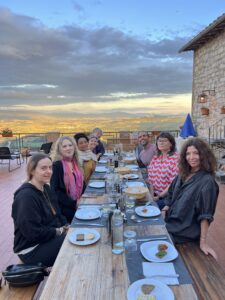
 Participants will be housed in the remarkably well-preserved Umbrian hill town of Monte Castello di Vibio. Your workshoppackage is all-inclusive, providing welcome and departure services and airport transfer from the Rome Fiumicino, Leonardo Da Vinci Airport (FCO) aboard our comfortable private bus, single occupancy accommodations with shared bath (a wide range of upgrades with private bath are available), 3 meals per day Monday-Thursday, Prosecco brunch and dinner on Saturday and Sunday (no meals are served on Friday, our excursion day. Your workshop includes one excursion per week and many additional options are available on weekends for an additional fee. Of course, 24/7 access to facilities and 24/7 bi-lingual support.
Participants will be housed in the remarkably well-preserved Umbrian hill town of Monte Castello di Vibio. Your workshoppackage is all-inclusive, providing welcome and departure services and airport transfer from the Rome Fiumicino, Leonardo Da Vinci Airport (FCO) aboard our comfortable private bus, single occupancy accommodations with shared bath (a wide range of upgrades with private bath are available), 3 meals per day Monday-Thursday, Prosecco brunch and dinner on Saturday and Sunday (no meals are served on Friday, our excursion day. Your workshop includes one excursion per week and many additional options are available on weekends for an additional fee. Of course, 24/7 access to facilities and 24/7 bi-lingual support.
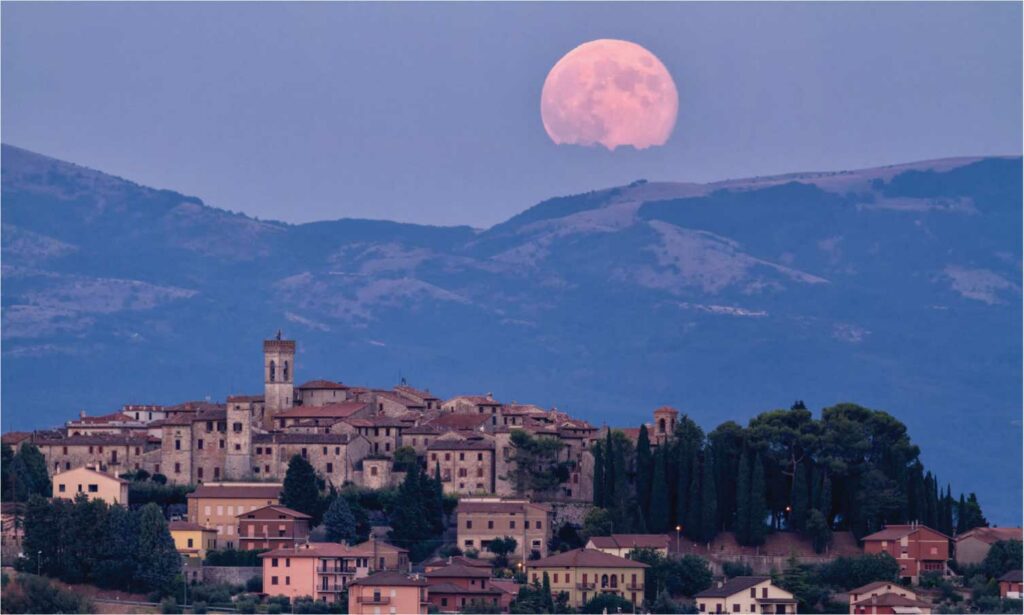
 Our in-depth animal sculpture workshop will allow you to immerse yourself in your art. Nick will demonstrate the importance of observation, show you how to make an emotional connection with your subject and realize your own creative vision. Our extended workshop format allows plenty of time for instruction and practical work.
Our in-depth animal sculpture workshop will allow you to immerse yourself in your art. Nick will demonstrate the importance of observation, show you how to make an emotional connection with your subject and realize your own creative vision. Our extended workshop format allows plenty of time for instruction and practical work.
Under Nick’s expert guidance, you will make your own animal sculpture. Combining a mix of one-to-one and group demonstration and tuition, Nick will teach you building techniques and help you hone your modeling skills. No prior experience is needed and all the tools and materials you’ll need are provided.
Participants will be housed in the remarkably well-preserved Umbrian hill town of Monte Castello di Vibio. Your workshop package is all-inclusive, providing welcome and departure services and airport transfer from the Rome Fiumicino, Leonardo Da Vinci Airport (FCO). Aboard our comfortable private bus, single occupancy accommodations with shared bath (a wide range of upgrades with private bath are available), 3 meals per day Monday-Thursday, Prosecco brunch and dinner on Saturday and Sunday (no meals are served on Friday, our excursion day. Your workshop includes one excursion per week and many additional options are available on weekends for an additional fee. Of course, 24/7 access to facilities and 24/7 bi-lingual support are provided.
A Note to Participants:
When packing:
Materials to bring from home:
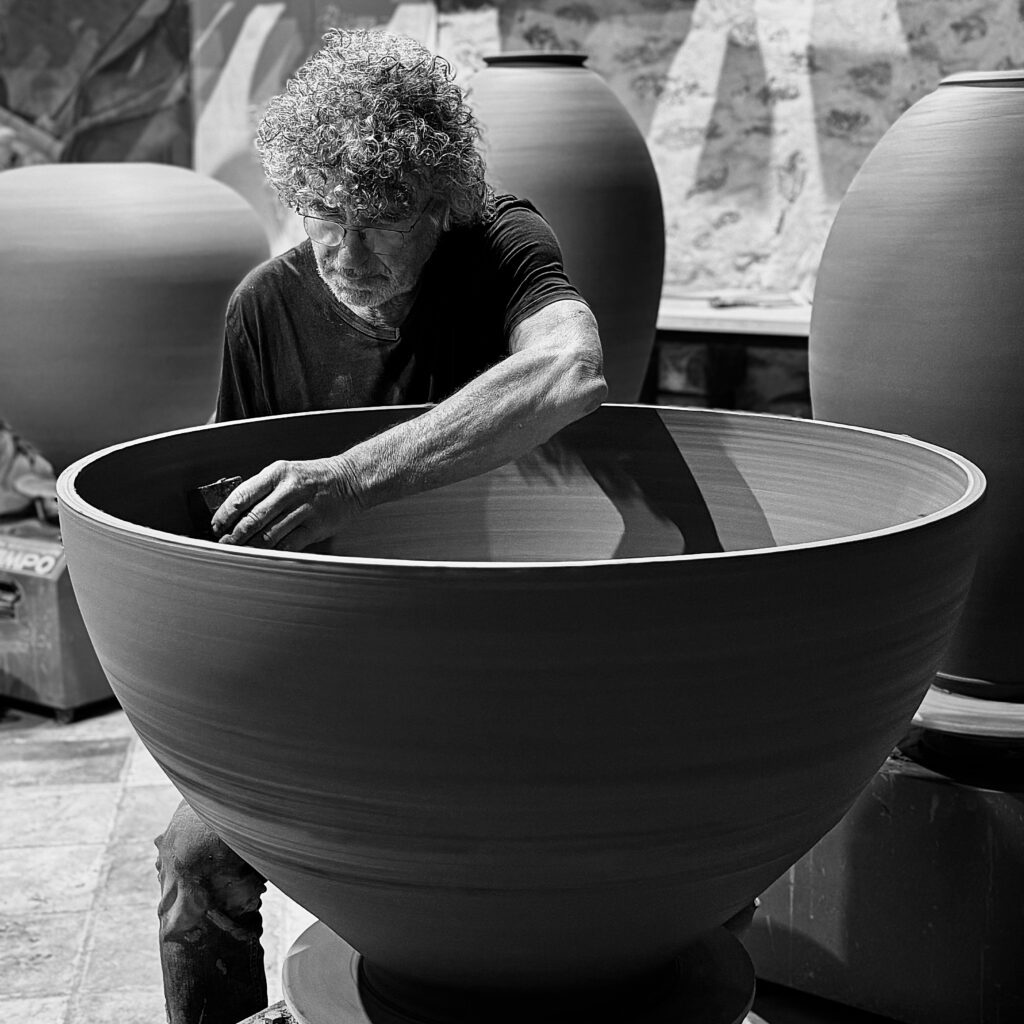 Join us in the heart Italy - in our mountaintop "castle town" of Monte Castello di Vibio for an intensive week of wood kiln construction with renowned potter and master kiln-builder, Rudie Delanghe!
Join us in the heart Italy - in our mountaintop "castle town" of Monte Castello di Vibio for an intensive week of wood kiln construction with renowned potter and master kiln-builder, Rudie Delanghe!
Here, deep among the mountains and ancient forests, Roman and Etruscan kilns still dot the clay-rich landscape of the Tiber Valley. Our participants live and work in an ancient mountain village made of stones, which is unchanged since the middle ages. We are surrounded by vineyards and olive groves -and steeped in traditions. This is truly a side of Italy that most travelers never experience!
In this landscape where past meets present, we will follow in the path of the ancestral crafts of the region as we construct a kiln that Rudie has designed and has himself built many times. The 1.5 meter wood fired trolley kiln we build together will constructed with over 2,000 refractory insulation bricks and provide a useable space 100 cm wide, 120 cm long, 130 cm high. This remarkably efficient kiln design is very economical in its use of wood and easy to fire by one person.
Building a wood-fired kiln is a complex process that requires both extensive knowledge and experience as well as careful planning. Rudie will select materials, weld our metal frames and trolley, and lend his direction and masonry expertise to the group as we build the kiln itself. Participants will learn principles that underlie the successful design of a wood kiln and the complex process behind its construction from a master European kiln-builder! This workshop is open to all levels of experience. Those interested in firing their work and experiencing the kiln in action, should consider our subsequent Workshop: Earth, Hands, and Fire: Building Epic Vessels for the Wood Kiln with Eva Champagne October 5- 19, 2025.(Be sure to inquire about reduced pricing for both workshops.)
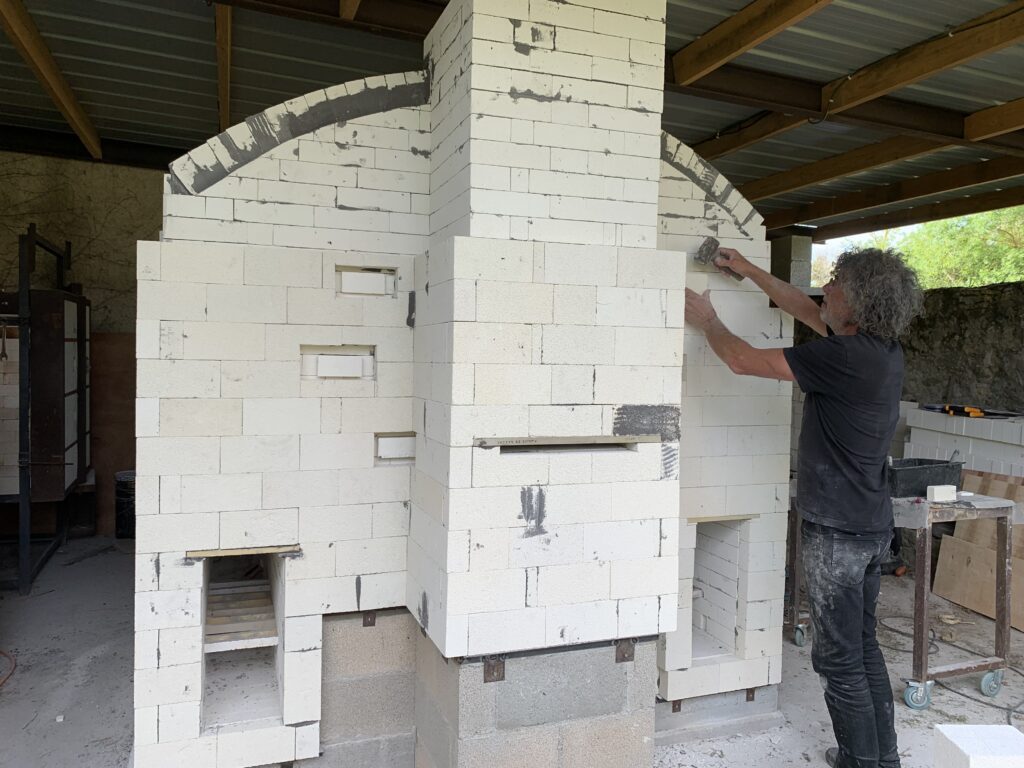 During the Workshop, participants will be housed in the remarkably well-preserved Umbrian hill town of Monte Castello di Vibio. Your workshop package is all-inclusive, providing welcome and departure services and airport transfer from the Rome Fiumicino, Leonardo Da Vinci Airport (FCO) aboard our comfortable private bus, single occupancy accommodations with shared bath (a wide range of upgrades with private bath are available), 3 meals per day Monday-Thursday, Prosecco brunch and dinner on Saturday and Sunday. Your workshop includes one excursion per week and many additional options are available on weekends for an additional fee. Of course, 24/7 access to facilities and 24/7 bi-lingual support are provided.
During the Workshop, participants will be housed in the remarkably well-preserved Umbrian hill town of Monte Castello di Vibio. Your workshop package is all-inclusive, providing welcome and departure services and airport transfer from the Rome Fiumicino, Leonardo Da Vinci Airport (FCO) aboard our comfortable private bus, single occupancy accommodations with shared bath (a wide range of upgrades with private bath are available), 3 meals per day Monday-Thursday, Prosecco brunch and dinner on Saturday and Sunday. Your workshop includes one excursion per week and many additional options are available on weekends for an additional fee. Of course, 24/7 access to facilities and 24/7 bi-lingual support are provided.
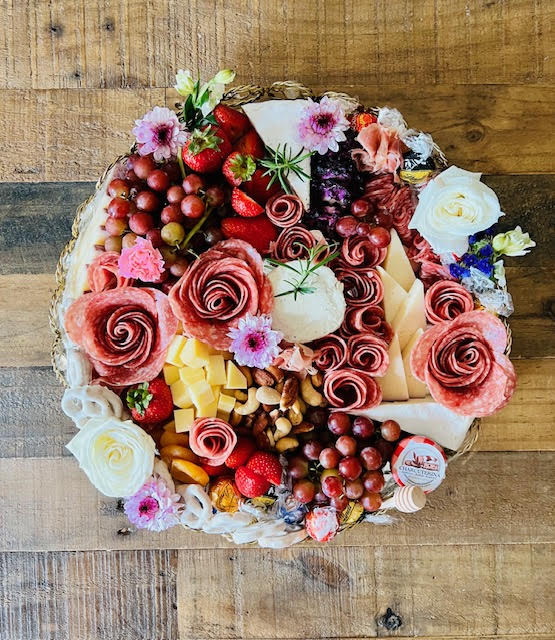 Want to impress your family and friends for with your unique charcuterie board? Are you interested in adding classic Italian salumi and cheeses to your repertoire of flavors?
Want to impress your family and friends for with your unique charcuterie board? Are you interested in adding classic Italian salumi and cheeses to your repertoire of flavors?
Then join us for this exclusive event and learn how to create an elegant charcuterie board with unforgettable traditional ingredients and flavor combinations that will blow your guests away! In this workshop, we put the tools right in your hands!
The Course is led by Nicole Dowds of the celebrated, Charcuterina. In addition to Charcuterina, Nicole is also a food stylist, classic piano player, and world traveler. While living in in Rome, Nicole experienced and was enchanted by authentic Italian cuisine. She is the ideal guide to your adventure in the world of Italian Charcuterie.
The workshop includes the Full kit (instruction + supplies + premium ingredients), a beautiful olive wood board to bring with you after the workshop with Italian Local Wine Pairing.
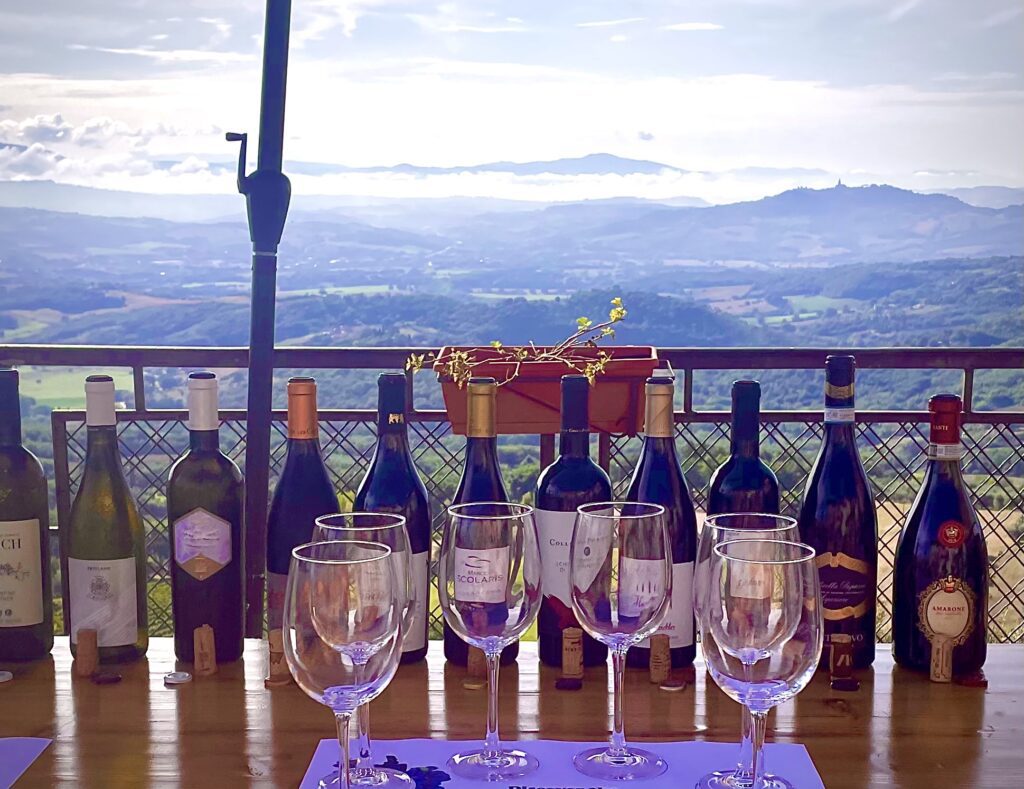 Considering wine paring, Italy is the worlds largest wine producer and it is appropriate that afternoons will be devoted to understanding paring Italian charcuterie and cheeses with wines of the country. With this in mind you'll learn about the native grapes and their fascinating histories, and, when possible, meet the passionate producers who are reviving them. We’ll provide printouts to enhance your learning experience to supplement tastings and offer visits to Umbrian wineries. You'll delve into the winemaking process, explore different types of terroir and their effects on wine, and learn how to properly assess wine using visual, olfactory, and gustatory senses, all under the guidance of a professional sommelier. Our guide to wine will be renowned food and wine critic and sommelier, Rowena Dumlao. With her guidance, you'll explore wines from each of Italy's 20 regions. Rowena has meticulously selected 2 wines from each region, highlighting the country’s remarkable vinicultural diversity. Each day includes an informative presentation followed by a tasting session featuring 8 distinctive wines, allowing participants to sample over 50 different wines throughout the workshop.
Considering wine paring, Italy is the worlds largest wine producer and it is appropriate that afternoons will be devoted to understanding paring Italian charcuterie and cheeses with wines of the country. With this in mind you'll learn about the native grapes and their fascinating histories, and, when possible, meet the passionate producers who are reviving them. We’ll provide printouts to enhance your learning experience to supplement tastings and offer visits to Umbrian wineries. You'll delve into the winemaking process, explore different types of terroir and their effects on wine, and learn how to properly assess wine using visual, olfactory, and gustatory senses, all under the guidance of a professional sommelier. Our guide to wine will be renowned food and wine critic and sommelier, Rowena Dumlao. With her guidance, you'll explore wines from each of Italy's 20 regions. Rowena has meticulously selected 2 wines from each region, highlighting the country’s remarkable vinicultural diversity. Each day includes an informative presentation followed by a tasting session featuring 8 distinctive wines, allowing participants to sample over 50 different wines throughout the workshop.
Throughout the workshop, participants will be housed in the remarkably well-preserved Umbrian hill town of Monte Castello di Vibio. Your workshop package is all-inclusive, providing welcome and departure services and airport transfer from the Rome Fiumicino, Leonardo Da Vinci Airport (FCO). Aboard our comfortable private bus, single occupancy accommodations with shared bath (a wide range of upgrades with private bath are available), 3 meals per day Monday-Thursday, Prosecco brunch and dinner on Saturday and Sunday (no meals are served on Friday, our excursion day. Your workshop includes one excursion per week and many additional options are available on weekends for an additional fee. Of course, 24/7 access to facilities and 24/7 bi-lingual support are provided.
Join us for a week of immersion in local tradition among the green hills of Umbria, in the heart of Italy. Here, in the ancient medieval village of Monte Castello di Vibio, time stands still. One of the most finely restored of Italian Hill Towns, Monte Castello has been recently been added to the list of "Most Beautiful Villages of Italy." Its stands among the hills of the Tiber valley, looking over the entire valley. From our vantage point, it is possible to admire the nearby historical cities of Todi, Perugia and even Montefalco on clear spring days.
Please note: This experience is held concurrently with our Sommelier Certification Course and particularly for those traveling from abroad, the Week in the Green Heart of Italy workshop presents the ideal meal and accommodation package to accompany that course - provided at very competitive rates. For those traveling with a partner or spouse, family member or friend, the workshop makes it possible to enjoy the intimacy of our spectacularly beautiful village and for the companion not participating in the Sommelier course, provides interesting activities and the possibility of dining together. However, the Sommelier Course is NOT INCLUDED IN THIS PROGRAM.
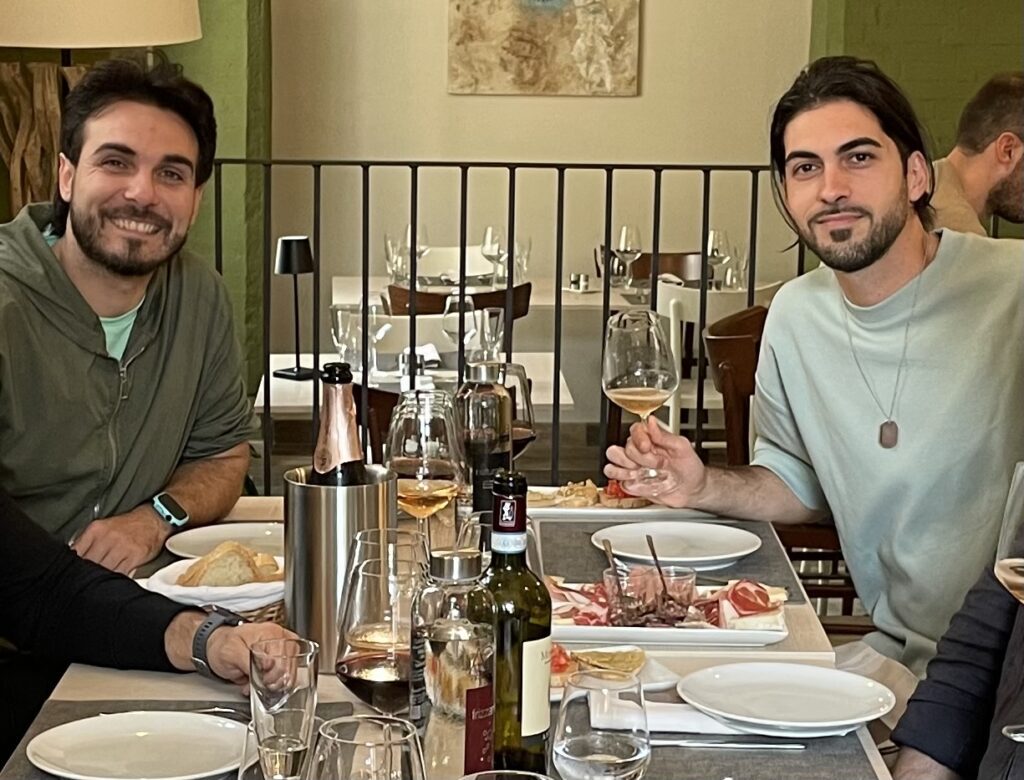 The International Center of the Arts will make you feel at home during your stay, pampering you with our local cuisine created by our chefs Cristiano and Loris whose kitchen utilizes locally-sourced, seasonal products and traditional recipes of Umbria. Truffles, local mushrooms, wild boar and many other regional ingredients accompany great local wine ad olive oil, freshly-baked bread! During your stay, a cooking course will allow you to learn the secrets of the art of hand-made pasta according to the family recipe of Cristiano and his grandmother Anna: fun with your hands in the pasta is guaranteed as is the flavor!
The International Center of the Arts will make you feel at home during your stay, pampering you with our local cuisine created by our chefs Cristiano and Loris whose kitchen utilizes locally-sourced, seasonal products and traditional recipes of Umbria. Truffles, local mushrooms, wild boar and many other regional ingredients accompany great local wine ad olive oil, freshly-baked bread! During your stay, a cooking course will allow you to learn the secrets of the art of hand-made pasta according to the family recipe of Cristiano and his grandmother Anna: fun with your hands in the pasta is guaranteed as is the flavor!
 The program offers a week of relaxation filled with immersive experiences that will soon become treasured memories. From pasta-making to truffle hunting to watching the traditional ceramic techniques of the nearby majolica capital, Deruta in action. We will visit the incredible Marmore Falls - the highest in Europe. We will sample regional wines and typical products at nearby wineries, learn about the wonderful olive oils of Umbria, and celebrate the ancient culinary traditions of our fascinating Region. We share the same respect for the territory and the landscape which has been our and passion over the years.
The program offers a week of relaxation filled with immersive experiences that will soon become treasured memories. From pasta-making to truffle hunting to watching the traditional ceramic techniques of the nearby majolica capital, Deruta in action. We will visit the incredible Marmore Falls - the highest in Europe. We will sample regional wines and typical products at nearby wineries, learn about the wonderful olive oils of Umbria, and celebrate the ancient culinary traditions of our fascinating Region. We share the same respect for the territory and the landscape which has been our and passion over the years.
Your all inclusive experience provides accommodation in our beautifully preserved 14th c., medieval hill town in a former convent, called: "Asilo." The simple rooms convey the experience of the nuns who lived here in quiet contemplation, while each has a window overlooking the stunning Tiber Valley. Each room contains a sink and vanity, but the bathrooms are shared 2-3 rooms to a bath. Accommodation upgrades are available with private bath, AC, etc., are available on request. We provide Welcome and Departure services on selected days from the Rome/Fiumicino, Leonardo da Vinci International (FCO) airport as well as airport transfer by private bus. Our private bus transports participants to off-campus excursions to vineyards, etc. Using locally sourced and artisanal ingredients, three traditional meals are lovingly prepared by our kitchen staff Monday through Friday. Saturdays and Sundays, we provide an incredible brunch with fresh baked bread and pastries, a variety of eggs, cheeses, and cured meats, as well as fresh yogurt and fruit. Of course, all accompanied by chilled Prosecco! Saturday and Sunday dinner are also "grill-day’s" and we will enjoy savory grilled meats (including wild game), fresh vegetables, and more! All lunches and dinners are accompanied by local wine, wines from our extensive Wine List available for purchase. Our bi-lingual staff is on hand 24/7 to fill your needs.
Would you like to master one of the most intriguing graphic techniques?
Join "Linocut and Book Illustration" course, which will open up a world of creative expression through linocut and the art of illustration!
You will learn about the history of linocut — from its origins to modern trends.
Understand how different types of strokes, lines, and dots affect the final image.
Gain practical knowledge of compositional rules and learn to convey space, light, and shadows through line work.
Immersion in the creative process:
The course is divided into three practical themes:
 You’ll learn how to turn the abstract ideas of poetry into concrete graphic elements, balancing both the text and imagery in a harmonious composition. This will be a opportunity to combine literature and graphic art, allowing participants to deepen their understanding of both mediums while creating a series of meaningful, artistic works.
You’ll learn how to turn the abstract ideas of poetry into concrete graphic elements, balancing both the text and imagery in a harmonious composition. This will be a opportunity to combine literature and graphic art, allowing participants to deepen their understanding of both mediums while creating a series of meaningful, artistic works.
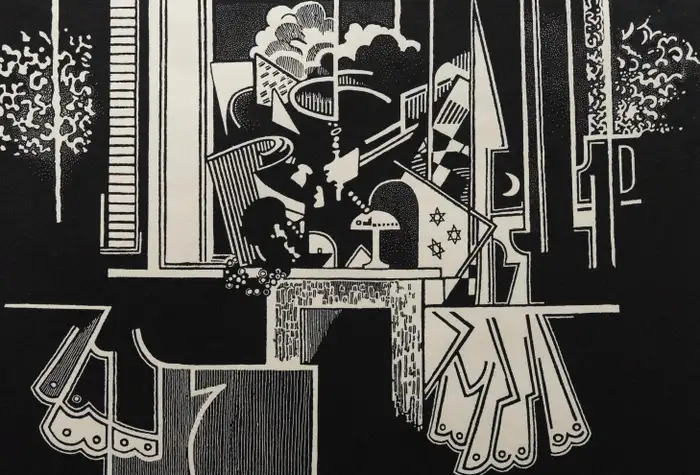
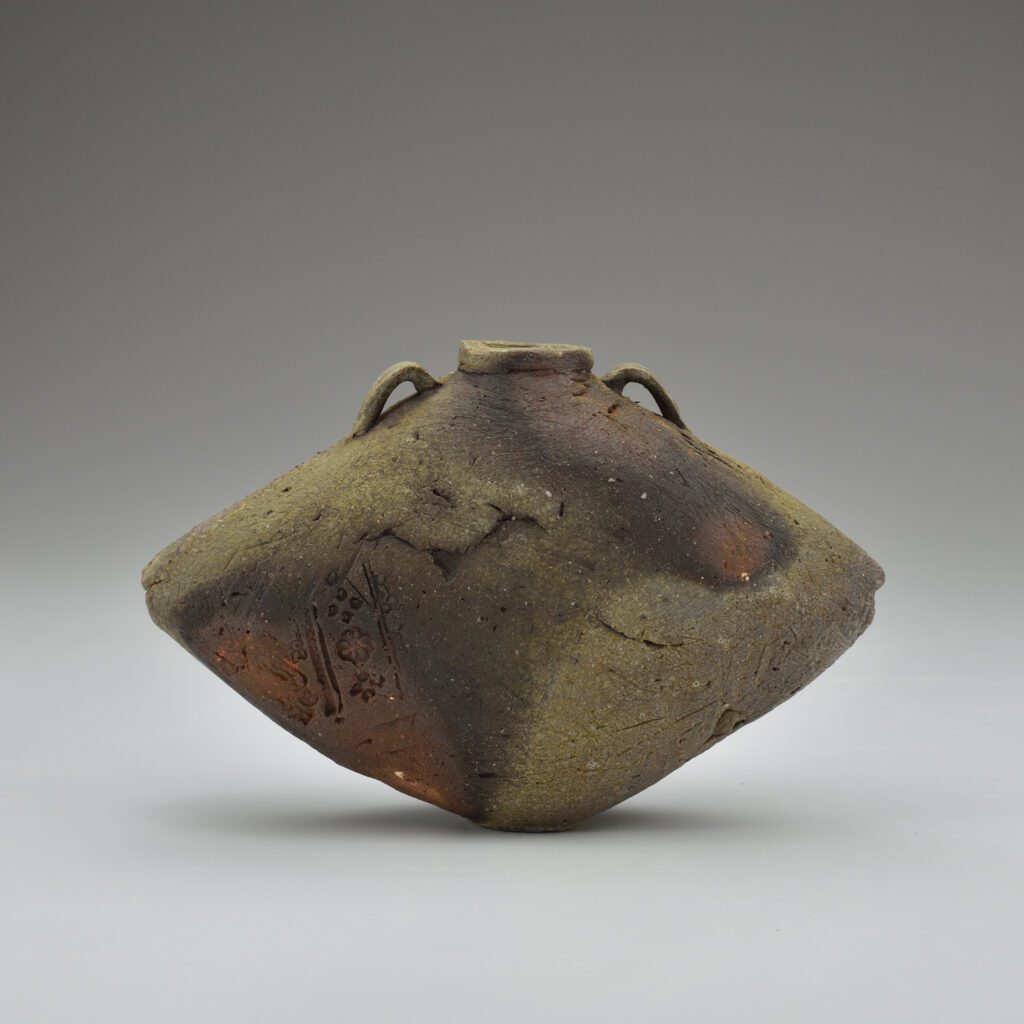 Join us for an immersive two weeks of creating meaningful ceramic vessels and firing them in ICA Italy’s new wood kiln. Be in the first group to fire this custom-built kiln!
Join us for an immersive two weeks of creating meaningful ceramic vessels and firing them in ICA Italy’s new wood kiln. Be in the first group to fire this custom-built kiln!
Throughout history ceramic vessels have told stories far more profound than the mere fact of storage or service. During this workshop, we plumb the depths of our own motivations to create vessels which carry our contemporary, personal narratives.
Taking inspiration from the landscape and historical-cultural milieu of Umbria, as well as the unique ideas and influences we each contain within us, we create a series of works that embody a specific moment, investigation, and touch. This workshop explores the vivid possibilities for expression when one adopts a “freestyle” approach to making. We create personal narrative and content through the interplay between form, surface embellishment, and wood firing atmosphere on a series of works inspired by vessels of antiquity.
Eva’s intuitive hand building method creates 3 dimensional “canvases” upon which to explore multiple techniques for mark making, printing, adding depth and texture— in effect, telling a visual story across the surface of each vessel, and then offering these highly expressive works to the new wood kiln, allowing it to have the final word in design.
During our first week together, Eva offers step by step technical guidance, demonstrations, one on one mentoring, and open-forum discussion, as we create our series of vessels at varying scales. We quickly hone our hand building skills, develop tactile acuity, and push our ability to make clay do what we want and convey the thoughts and concerns we wish it to. We investigate numerous ways that the form and surface can be handled for expressive results, be your aim dramatic, vivid, or subtle.
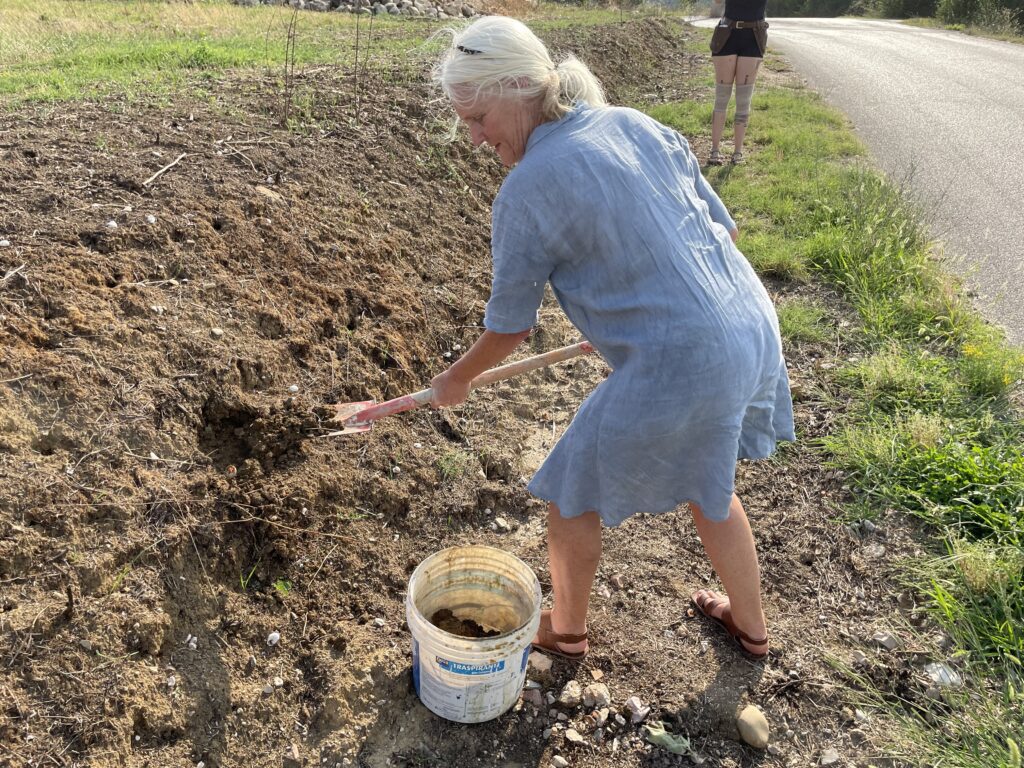 At the end of the first week, we dig up some local clay to work with, allowing us to compare the material qualities and firing results between clay bodies. During week two, we turn our attention to finishing touches to our series, drying them, and preparing for the wood firing. We discuss all aspects of this process, and everyone is hands-on during the inaugural firing itself, which takes about one day. We experience the exhilarating freedom of giving our works over to the wood kiln, since results cannot be entirely predicted. Our process can be described as a collaboration between the maker’s planning and execution, and the kiln’s sweeping endowments and editing: a meeting of intention and fortune.
At the end of the first week, we dig up some local clay to work with, allowing us to compare the material qualities and firing results between clay bodies. During week two, we turn our attention to finishing touches to our series, drying them, and preparing for the wood firing. We discuss all aspects of this process, and everyone is hands-on during the inaugural firing itself, which takes about one day. We experience the exhilarating freedom of giving our works over to the wood kiln, since results cannot be entirely predicted. Our process can be described as a collaboration between the maker’s planning and execution, and the kiln’s sweeping endowments and editing: a meeting of intention and fortune.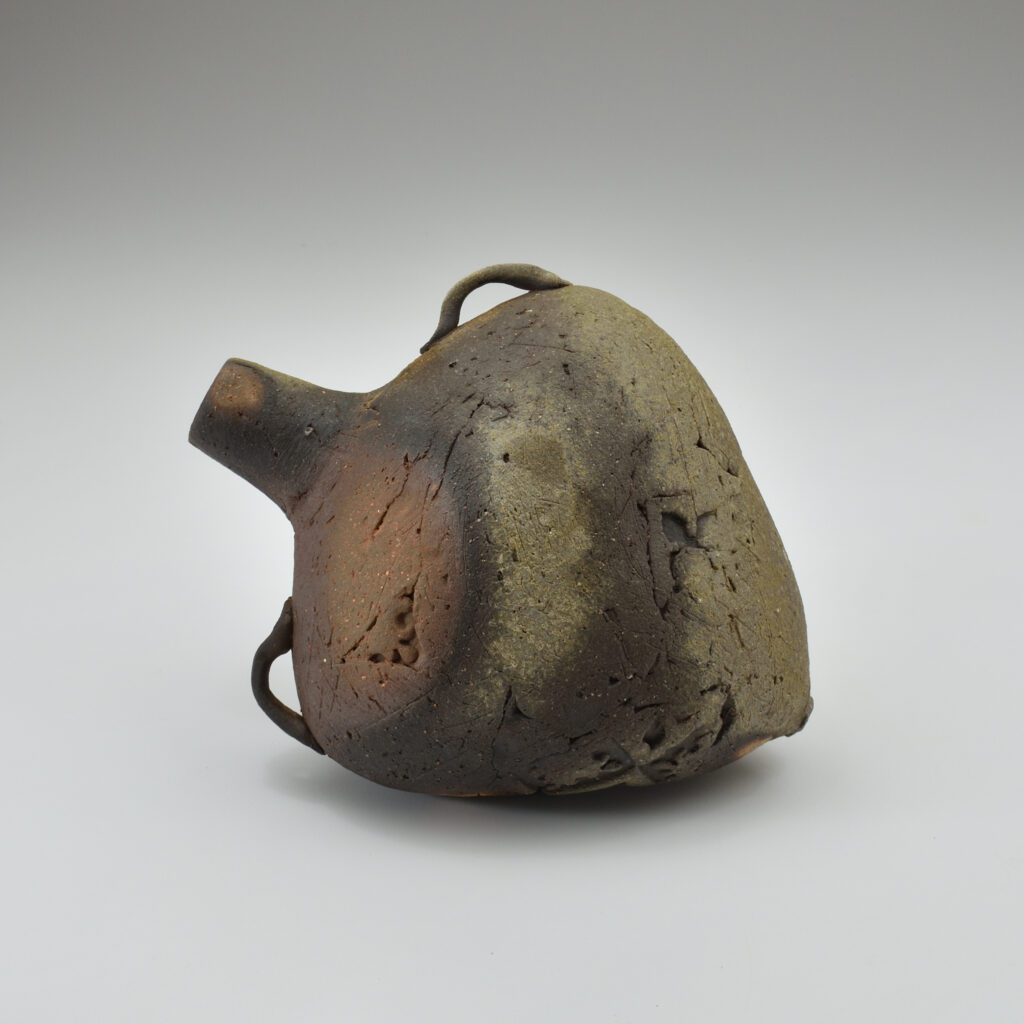
This intensive period of creative reflection and production undertaken in such a breathtaking setting as Monte Castello Di Vibio will impact your studio practice for a long time to come. This workshop is open to all levels of experience.
Participants will be housed in the remarkably well-preserved Umbrian hill town of Monte Castello di Vibio. Your workshop package is all-inclusive, providing welcome and departure services and airport transfer from the Rome Fiumicino, Leonardo Da Vinci Airport (FCO). Aboard our comfortable private bus, single occupancy accommodations with shared bath (a wide range of upgrades with private bath are available), 3 meals per day Monday-Thursday, Prosecco brunch and dinner on Saturday and Sunday (no meals are served on Friday, our excursion day. Your workshop includes one excursion per week and many additional options are available on weekends for an additional fee. Of course, 24/7 access to facilities and 24/7 bi-lingual support are provided.
 Ancient cultures resonate in Umbria and in particular was the cradle of Etruscan Civilization. In respect for these traditions, ICA is proud to offer an intensive -hands-on- studio pottery program on the techniques of Ancient Ceramics, focusing on Greek and Etruscan Pottery. Experts in these techniques will lead participants into one the most appreciated ancient forms in the history of ceramics: Greek and Etruscan Vases. Participants are accommodated in Monte Castello, and the workshop is to be held at our Deruta laboratory, in the Umbrian town renowned for its majolica traditions.
Ancient cultures resonate in Umbria and in particular was the cradle of Etruscan Civilization. In respect for these traditions, ICA is proud to offer an intensive -hands-on- studio pottery program on the techniques of Ancient Ceramics, focusing on Greek and Etruscan Pottery. Experts in these techniques will lead participants into one the most appreciated ancient forms in the history of ceramics: Greek and Etruscan Vases. Participants are accommodated in Monte Castello, and the workshop is to be held at our Deruta laboratory, in the Umbrian town renowned for its majolica traditions.
 The intensive workshop provides four days of "in-class" work studying decorative techniques of the famous black-figure and red-figure vessels focussing on analysis of specific examples such as the Krater of Euphronius, which describes the history of the Trojan War. The workshop includes lectures focusing on history of the medium with special attention to technical aspects and practical dimensions as well as aesthetic considerations -manifest in their classic shapes and colors.
The intensive workshop provides four days of "in-class" work studying decorative techniques of the famous black-figure and red-figure vessels focussing on analysis of specific examples such as the Krater of Euphronius, which describes the history of the Trojan War. The workshop includes lectures focusing on history of the medium with special attention to technical aspects and practical dimensions as well as aesthetic considerations -manifest in their classic shapes and colors.
Participants will work with shapes and decoration characteristic of the Greek Classical Period. The workshop will also focus on sources of the pigments which were harvested from the earth and decanted from clays. The colors we use will be derived from clays, just as in ancient times - participants will even paint their pots with brushes specially made with hare whiskers. Traditional techniques to be covered include: painting, scgraffito, sanding and firing - there will also be a traditional "egg" decoration test, in which color changes with heat, providing insight into a simple but historic decorative technique.
Throughout the workshop, participants will be housed in the remarkably well-preserved Umbrian hill town of Monte Castello di Vibio. Your workshop package is all-inclusive, providing welcome and departure services and airport transfer from the Rome Fiumicino, Leonardo Da Vinci Airport (FCO). Aboard our comfortable private bus, single occupancy accommodations with shared bath (a wide range of upgrades with private bath are available), 3 meals per day Monday-Thursday, Prosecco brunch and dinner on Saturday and Sunday (no meals are served on Friday, our excursion day. Your workshop includes one excursion per week and many additional options are available on weekends for an additional fee. Of course, 24/7 access to facilities and 24/7 bi-lingual support are provided.
ICARTS Italia is proud to announce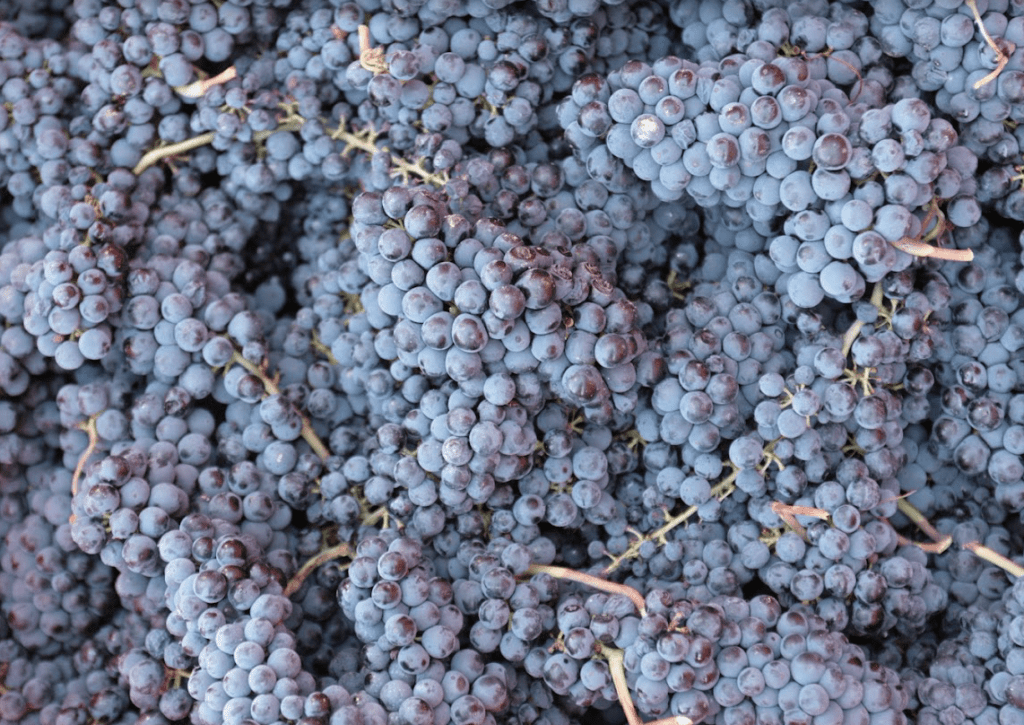 our collaboration with the renowned, Court of Master Sommeliers of Europe who will offer their 3-day, Introductory Sommelier Course and Exam and their Certified Sommelier Examination at our facilities in Monte Castello this summer. We are indeed honored to host these classes which are to be conducted by the worlds premier sommelier training and examining body! The Course fee includes the course and instruction, wine and classes, and testing for both Level 1 and 2 certification. (Please note, certification is not a guaranteed and is contingent on passing the appropriate exams.)
our collaboration with the renowned, Court of Master Sommeliers of Europe who will offer their 3-day, Introductory Sommelier Course and Exam and their Certified Sommelier Examination at our facilities in Monte Castello this summer. We are indeed honored to host these classes which are to be conducted by the worlds premier sommelier training and examining body! The Course fee includes the course and instruction, wine and classes, and testing for both Level 1 and 2 certification. (Please note, certification is not a guaranteed and is contingent on passing the appropriate exams.)
For millennia, the peoples of the Italian peninsula have produced some of the most extraordinary wines in the world. Today Italy is the worlds largest wine-producer and also maintains the greatest diversity of autochthonous (indigenous) wines to be found anywhere! In fact, here in Umbria, our village is surrounded by vineyards producing varietals that are found nowhere else - it is the perfect setting in which to begin your journey into becoming a sommelier! Our objective in this workshop provide this geographic and cultural backdrop to the rigorous sommelier certification program (Level 1 and 2) offered by the Court of Master Sommeliers. The class is intended for food and wine industry professionals seeking to develop their wine theory, tasting, and practical expertise.
It is important for participants to be aware that this rigorous program is demanding, requiring a 60% pass mark on both written and practical evaluations in addition to two-days of in-person coursework and lecture. The lectures are presented by Master Sommeliers using a power-point format interspersed with wine tastings, plus a practical service demonstration. The examination comprises a multiple-choice theoretical paper plus a short elementary practical service test. The Introductory Sommelier Certificate examination is held on the morning of the third day of the introductory program. After examination results are tallied, those who are successful will be invited to participate in the Certified Sommelier examination, to be held later that day.
The 3-Day experience hosted by ICARTS in collaboration with the Court of Master Sommeliers class culminates with exams on Friday. For those traveling from abroad, we highly recommend enrolling in our concurrent, Week in the Green Heart of Italy program, which provides and ideal companion experience to the Sommelier Program. It presents an opportunity to stay at ICARTS facilities in Mionte Castello and to dine at the school on our breathtaking terrace over the Tiber Valley.
Optional addition: A Week in the Green Heart of Italy
(Please note that the Week in the Green Heart of Italy Program is NOT included in the price of the 3-day Sommelier course. No meals or accommodation are included in the price of the sommelier course.)
For those traveling from abroad, the program offers an ideal opportunity to acclimate to the time change, relax and prepare for the Sommelier Course with MA. For those coming to ICARTS to participate in the Sommelier program, our Week in the Green Heart of Italy Program offers a very attractively priced all-inclusive package of meals and accommodation.
For those interested in traveling with a partner or spouse, the program provides ideal activities for a companion with a week of relaxation filled with immersive experiences that will soon become treasured memories. From pasta-making to truffle hunting to watching the traditional ceramic techniques of the nearby majolica capital, Deruta in action. We will visit the incredible Marmore Falls - the highest in Europe. We will sample regional wines and typical products at nearby wineries, learn about the wonderful olive oils of Umbria, and celebrate the ancient culinary traditions of our fascinating Region. We share the same respect for the territory and the landscape which has been our and passion over the years.
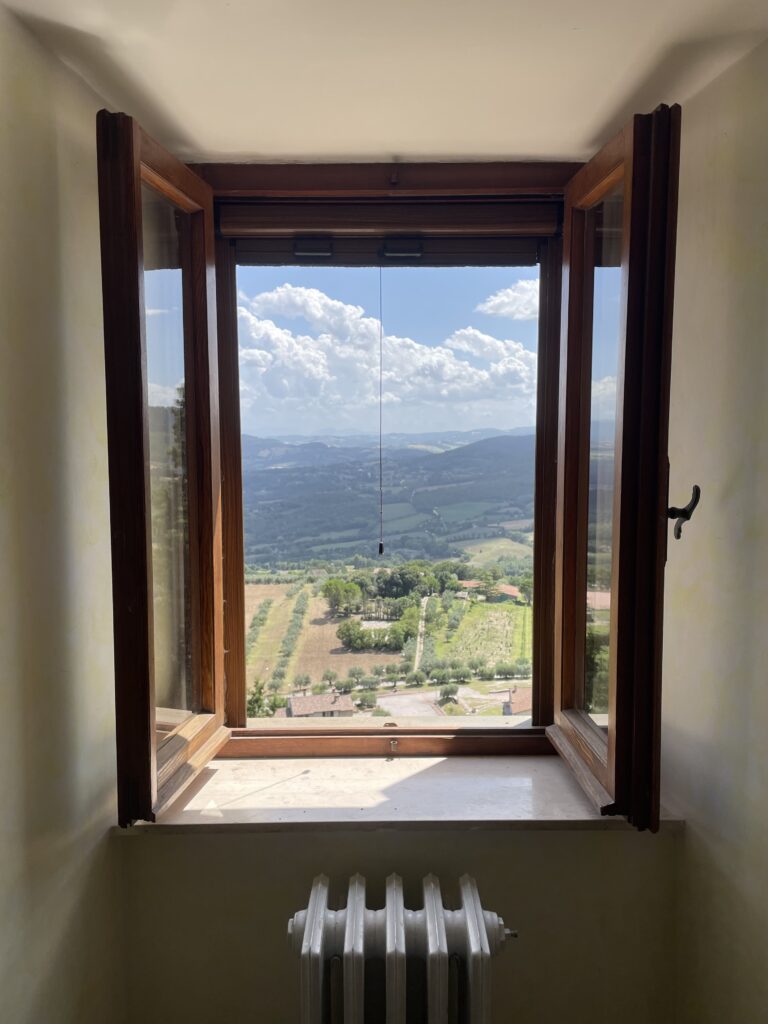 The all inclusive experience provides accommodation in our beautifully preserved 14th c., medieval hill town in a former convent, called: "Asilo." The simple rooms convey the experience of the nuns who lived here in quiet contemplation, while each has a window overlooking the stunning Tiber Valley. Double occupancy accommodation upgrades are available with private bath, AC, etc., are available on request. We provide Welcome and Departure services on selected days from the Rome/Fiumicino, Leonardo da Vinci International (FCO) airport as well as airport transfer by private bus. Our private bus transports participants to off-campus excursions to vineyards, etc. Using locally sourced and artisanal ingredients, three traditional meals are lovingly prepared by our kitchen staff Monday through Friday. Saturdays and Sundays, we provide an incredible brunch with fresh baked bread and pastries, a variety of eggs, cheeses, and cured meats, as well as fresh yogurt and fruit. Of course, all accompanied by chilled Prosecco! Saturday and Sunday dinner are also "grill-day’s" and we will enjoy savory grilled meats (including wild game), fresh vegetables, and more! All lunches and dinners are accompanied by local wine, wines from our extensive Wine List available for purchase. Our bi-lingual staff is on hand 24/7 to fill your needs.
The all inclusive experience provides accommodation in our beautifully preserved 14th c., medieval hill town in a former convent, called: "Asilo." The simple rooms convey the experience of the nuns who lived here in quiet contemplation, while each has a window overlooking the stunning Tiber Valley. Double occupancy accommodation upgrades are available with private bath, AC, etc., are available on request. We provide Welcome and Departure services on selected days from the Rome/Fiumicino, Leonardo da Vinci International (FCO) airport as well as airport transfer by private bus. Our private bus transports participants to off-campus excursions to vineyards, etc. Using locally sourced and artisanal ingredients, three traditional meals are lovingly prepared by our kitchen staff Monday through Friday. Saturdays and Sundays, we provide an incredible brunch with fresh baked bread and pastries, a variety of eggs, cheeses, and cured meats, as well as fresh yogurt and fruit. Of course, all accompanied by chilled Prosecco! Saturday and Sunday dinner are also "grill-day’s" and we will enjoy savory grilled meats (including wild game), fresh vegetables, and more! All lunches and dinners are accompanied by local wine, wines from our extensive Wine List available for purchase. Our bi-lingual staff is on hand 24/7 to fill your needs.
Please note that the Week in the Green Heart of Italy Program is NOT included in the price of the 3-day Sommelier course. No meals or accommodation are included with the sommelier course.
The below is taken from the Court of Master Sommeliers website at: https://www.courtofmastersommeliers.org/qualifications/
(https://www.courtofmastersommeliers.org/introductory-sommelier-certificate-3-days/)
A three-day, intensive program comprised of two days of coursework followed by one day of examinations.
Prerequisite: Hospitality industry experience and a good basic theoretical knowledge of wines.
"The content of the course covers:
"Candidates who satisfactorily gain this certificate will be able to:
(https://www.courtofmastersommeliers.org/certified-sommelier-examination-1-day/)
"The Certified Sommelier qualification is the primary certification for wine and beverage professionals, comprised of one full day of examinations. There is no coursework for this level."
Prerequisite: Successful completion of the Level 1 course.
"Objectives:
"The Certified Sommelier Examination comprises three parts:
 Closely linked to Zen culture, in which the beauty and harmony of simple things is exalted, the Raku technique was born in the 16th century as an art for the creation of bowls used during the traditional tea ceremony. It is characterized by a rapid production process and a particular process from which ceramics are obtained which differ in their characteristic cracking and coloring, giving life to unique pieces.
Closely linked to Zen culture, in which the beauty and harmony of simple things is exalted, the Raku technique was born in the 16th century as an art for the creation of bowls used during the traditional tea ceremony. It is characterized by a rapid production process and a particular process from which ceramics are obtained which differ in their characteristic cracking and coloring, giving life to unique pieces.
 In the 16th century, a type of rapid clay firing, called Raku, was discovered in Japan. This Japanese term has the meaning of "relaxed, pleasant, joy of living" and is traced back to the suburb of Kyoto where clay was extracted at the time. The birth of the Raku technique for creating ceramic objects seems to be attributed to a Korean craftsman, Chojiro. This ceramist, who mainly made tiles, began to use the particular clay, rich in silica sand, to speed up the production process of bowls for the tea ceremony.
In the 16th century, a type of rapid clay firing, called Raku, was discovered in Japan. This Japanese term has the meaning of "relaxed, pleasant, joy of living" and is traced back to the suburb of Kyoto where clay was extracted at the time. The birth of the Raku technique for creating ceramic objects seems to be attributed to a Korean craftsman, Chojiro. This ceramist, who mainly made tiles, began to use the particular clay, rich in silica sand, to speed up the production process of bowls for the tea ceremony.
The origin of Raku ceramics, with an improvised appearance, full of defects, almost unfinished, is closely connected to Zen thought which is inspired by simplicity, poverty in forms. All those that may seem like "imperfections" in Raku objects are instead exalted and considered "beautiful" in Zen culture. This aspect is also evident in the Kintsugi technique, which involves the repair of a vase or other object through the use of a precious metal: this Japanese art valorises "flaws" and becomes a metaphor of resilience.
The four-day course will cover: modelling, creation of sheet shapes, brush and airbrush glazing techniques, firing with crackle and metal effects. The course also includes 2 or 3 firings which are one of the most fascinating things about the technique.
 Throughout the workshop, participants will be housed in the remarkably well-preserved Umbrian hill town of Monte Castello di Vibio. Your workshop package is all-inclusive, providing welcome and departure services and airport transfer from the Rome Fiumicino, Leonardo Da Vinci Airport (FCO). Aboard our comfortable private bus, single occupancy accommodations with shared bath (a wide range of upgrades with private bath are available), 3 meals per day Monday-Thursday, Prosecco brunch and dinner on Saturday and Sunday (no meals are served on Friday, our excursion day. Your workshop includes one excursion per week and many additional options are available on weekends for an additional fee. Of course, 24/7 access to facilities and 24/7 bi-lingual support are provided.
Throughout the workshop, participants will be housed in the remarkably well-preserved Umbrian hill town of Monte Castello di Vibio. Your workshop package is all-inclusive, providing welcome and departure services and airport transfer from the Rome Fiumicino, Leonardo Da Vinci Airport (FCO). Aboard our comfortable private bus, single occupancy accommodations with shared bath (a wide range of upgrades with private bath are available), 3 meals per day Monday-Thursday, Prosecco brunch and dinner on Saturday and Sunday (no meals are served on Friday, our excursion day. Your workshop includes one excursion per week and many additional options are available on weekends for an additional fee. Of course, 24/7 access to facilities and 24/7 bi-lingual support are provided.
 Kurinuki (the term is Japanese) is a Japanese ceramic technique that embraces the natural surface of the clay and the individual imperfections that form in the intuitive process of making. Each vase is hand built and hand carved inside and out.
Kurinuki (the term is Japanese) is a Japanese ceramic technique that embraces the natural surface of the clay and the individual imperfections that form in the intuitive process of making. Each vase is hand built and hand carved inside and out.
The kurinuki process is a "sculptural" technique of volume formation: instead of adding material, as happens in the dovetail or slab construction, we start from the block of clay and gradually remove it, digging internally and modeling the external wall with the help of tools, until the desired shape is obtained. It is therefore a question, as in sculpture, of freeing a form enclosed in the formless.The idea of the artistic object may not be clear at the beginning: it is precisely the lack of clarity (not seeing clearly) that guides the path, that digs a path. What he obtains in the end is a symbol, something that continues to be linked to his origins, but like a child his destiny is autonomous.
 The program will also be a way to travel internally, allowing yourself to abandon yourself to this ancient art, creating unique objects linked to Zen culture with different stoneware clays. At the end, a tasting of Japanese tea will be offered on cups made of kurinuki.
The program will also be a way to travel internally, allowing yourself to abandon yourself to this ancient art, creating unique objects linked to Zen culture with different stoneware clays. At the end, a tasting of Japanese tea will be offered on cups made of kurinuki.
To complement the program, a visit to the famous Deruta, its museum dedicated to majolica and a Deruta artisan workshop.
 Throughout the workshop, participants will be housed in the remarkably well-preserved Umbrian hill town of Monte Castello di Vibio. Your workshop package is all-inclusive, providing welcome and departure services and airport transfer from the Rome Fiumicino, Leonardo Da Vinci Airport (FCO). Aboard our comfortable private bus, single occupancy accommodations with shared bath (a wide range of upgrades with private bath are available), 3 meals per day Monday-Thursday, Prosecco brunch and dinner on Saturday and Sunday (no meals are served on Friday, our excursion day. Your workshop includes one excursion per week and many additional options are available on weekends for an additional fee. Of course, 24/7 access to facilities and 24/7 bi-lingual support are provided.
Throughout the workshop, participants will be housed in the remarkably well-preserved Umbrian hill town of Monte Castello di Vibio. Your workshop package is all-inclusive, providing welcome and departure services and airport transfer from the Rome Fiumicino, Leonardo Da Vinci Airport (FCO). Aboard our comfortable private bus, single occupancy accommodations with shared bath (a wide range of upgrades with private bath are available), 3 meals per day Monday-Thursday, Prosecco brunch and dinner on Saturday and Sunday (no meals are served on Friday, our excursion day. Your workshop includes one excursion per week and many additional options are available on weekends for an additional fee. Of course, 24/7 access to facilities and 24/7 bi-lingual support are provided.
Join us for a week art-making, cooking, and immersion in local tradition among the green hills of Umbria, in the heart of Italy. Here, in the ancient medieval village of Monte Castello di Vibio, time stands still. One of the most finely restored of Italian Hill Towns, Monte Castello has been recently been added to the list of "Most Beautiful Villages of Italy." Its stands among the hills of the Tiber valley, looking over the entire valley. From our vantage point, it is possible to admire the nearby historical cities of Todi, Perugia and even Montefalco on clear spring days.
 The International Center of the Arts will make you feel at home during your stay, pampering you with our local cuisine created by our chefs Cristiano and Loris whose kitchen utilizes locally-sourced, seasonal products and traditional recipes of Umbria. Truffles, local mushrooms, wild boar and many other regional ingredients accompany great local wine ad olive oil, freshly-baked bread! During your stay, a cooking course will allow you to learn the secrets of the art of hand-made pasta according to the family recipe of Cristiano and his grandmother Anna: fun with your hands in the pasta is guaranteed as is the flavor!
The International Center of the Arts will make you feel at home during your stay, pampering you with our local cuisine created by our chefs Cristiano and Loris whose kitchen utilizes locally-sourced, seasonal products and traditional recipes of Umbria. Truffles, local mushrooms, wild boar and many other regional ingredients accompany great local wine ad olive oil, freshly-baked bread! During your stay, a cooking course will allow you to learn the secrets of the art of hand-made pasta according to the family recipe of Cristiano and his grandmother Anna: fun with your hands in the pasta is guaranteed as is the flavor!
 The program offers a week of relaxation filled with creative activities. From the traditional ceramic techniques of the nearby majolica capital, Deruta to Raku firing with our partners at Mondoceramica , participants will and model and decorate clay objects made with their own hands. We will visit the remarkable, nearby city of Orvieto and the incredible Marmore Falls - the highest in Europe. We will regional wines and typical products at the excellent Paolucci Winery, our partner in the celebration of the ancient culinary and wine traditions our fascinating Region. We share the same respect for the territory and the landscape which has been our and passion over the years.
The program offers a week of relaxation filled with creative activities. From the traditional ceramic techniques of the nearby majolica capital, Deruta to Raku firing with our partners at Mondoceramica , participants will and model and decorate clay objects made with their own hands. We will visit the remarkable, nearby city of Orvieto and the incredible Marmore Falls - the highest in Europe. We will regional wines and typical products at the excellent Paolucci Winery, our partner in the celebration of the ancient culinary and wine traditions our fascinating Region. We share the same respect for the territory and the landscape which has been our and passion over the years.
Participants will be housed in the relaxed environment of Monte Castello di Vibio, free from tourists, souvenir stands and the stress of commercial travel. From the time we pick you up at the Rome/Fiumicino Airport (FCO) until we return you with our fond farewells, all your needs will be met. Our workshop package is all-inclusive, providing welcome and departure services and airport transfer from the Rome Fiumicino, Leonardo Da Vinci Airport (FCO). Aboard our comfortable private bus, single occupancy accommodations with shared bath (a wide range of upgrades with private bath are available), 3 meals per day Monday-Thursday, Prosecco brunch and dinner on Saturday and Sunday (no meals are served on Friday, our excursion day. Your workshop includes one excursion per week and many additional options are available on weekends for an additional fee. Of course, 24/7 access to facilities and 24/7 bi-lingual support are provided.
Take a look at the itinerary and contact us for more information on possible accommodation upgrades available within the village to further customize your stay!